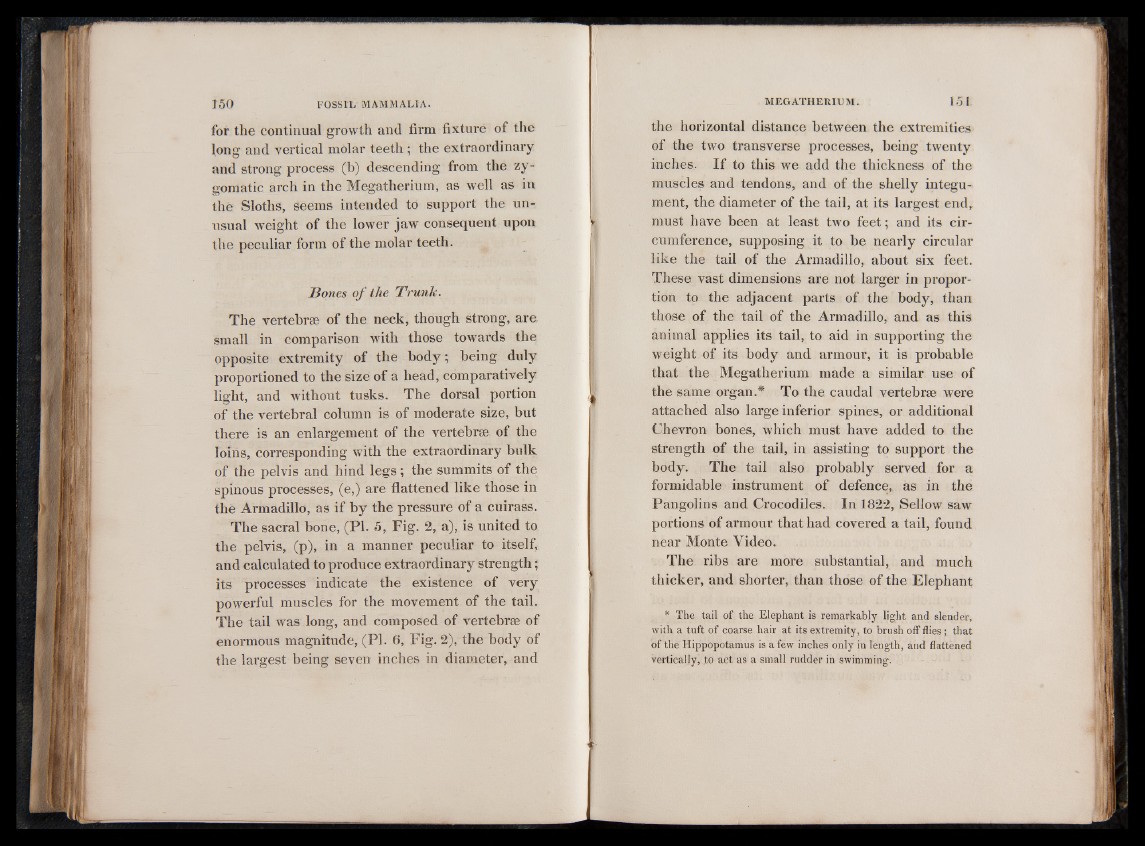
for the continual growth and firm fixture of the
long and vertical molar teeth; the extraordinary
and strong process (b) descending from the zygomatic
arch in the Megatherium, as well as in
the Sloths, seems intended to support the unusual
weight of the lower jaw consequent upon
the peculiar form of the molar teeth.
Hones o f the Trunk.
The vertebrae of the neck, though strong, are
small in comparison w7ith those towards the
opposite extremity of the body ; being duly
proportioned to the size of a head, comparatively
light, and without tusks. The dorsal portion
of the vertebral column is of moderate size, but
there is an enlargement of the vertebrae of the
loins, corresponding with the extraordinary bulk
of the pelvis and hind legs; the summits of the
spinous processes, (e,) are flattened like those in
the Armadillo, as if by the pressure of a cuirass.
The sacral bone, (PI. 5, Fig. 2 , a), is united to
the pelvis, (p), in a manner peculiar to itself,
and calculated to produce extraordinary strength;
its processes indicate the existence of very
powerful muscles for the movement of the tail.
The tail was long, and composed of vertebrae of
enormous magnitude, (PI. 6 , Fig. 2 ), the body of
the largest being seven inches in diameter, and
the horizontal distance between the extremities
of the two transverse processes, being twenty
inches. I f to this we add the thickness of the
muscles and tendons, and of the shelly integument,
the diameter of the tail, at its largest end,
must have been at least two feet; and its circumference,
supposing it to be nearly circular
like the tail of the Armadillo, about six feet.
These vast dimensions are not larger in proportion
to the adjacent parts of the body, than
those of the tail of the Armadillo,, and as this
animal applies its tail, to aid in supporting the
weight of its body and armour, it is probable
that the Megatherium made a similar use of
the same organ.* To the caudal vertebrae were
attached also large inferior spines, or additional
Chevron bones, which must have added to the
strength of the tail, in assisting to support the
body. The tail also probably served for a
formidable instrument of defence, as in the
Pangolins and Crocodiles. In 1822, Sellow saw
portions of armour that had covered a tail, found
near Monte Video.
The ribs are more substantial, and much
thicker, and shorter, than those of the Elephant
* The tail of the Elephant is remarkably light and slender,
with a tuft of coarse hair at its extremity, to brush off flies; that
of the Hippopotamus is a few inches only in length, and flattened
vertically, to act as a small rudder in swimming.